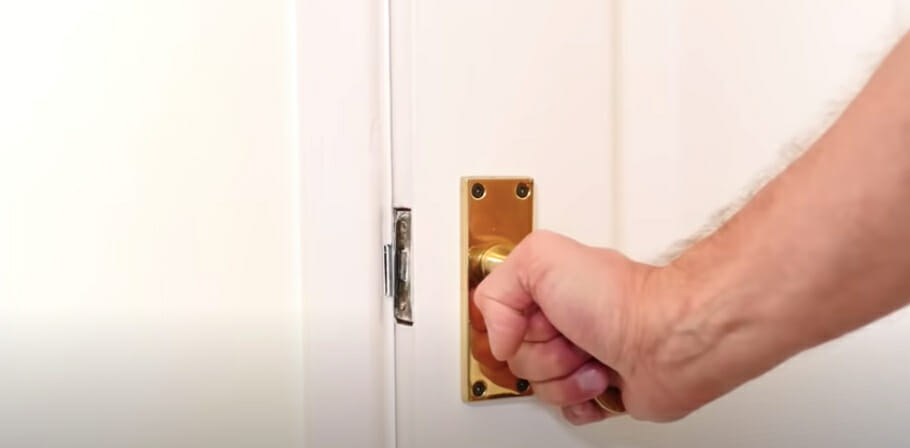Keeping your door locked is key to avoiding thefts and burglaries. However, there may come a time when you have a door that doesn’t have a lock or isn’t functional and you need a quick fix.
To use a sock to lock your door in a pinch without a lock you just need to get your sock, fold it, and wedge it between the door and the wall (preferably on top). Then close your door on the sock and you are done. However, using a sock consistently can harm your door hinges.
This is recommended for short-term situations, and emergencies only.
Using a sock to lock the door is both cheap and effective for a quick low-security fix. I will dig deeper in our article below.
Locking your Door with a Sock

It is a very simple procedure but should be done carefully.
Step 1: You first need to get a sock
I recommend winter socks as they are thick and long. At least make sure your sock has good tensile strength and is long enough. (1)
Step 2: Now fold your sock
You should fold your sock into a wedge-like shape that fits between your door with some leverage.
Step 3: Grab your sock
After folding the sock into a wedge-like shape, put it through the door preferably at the top where it opens or closes. Now push the door to close it. Please be watchful not to get your fingers stuck on your door.
Step 4: Pull your door and the sock
Pull the door and sock simultaneously to unlock it.
Other Tips for Locking a Door without a Lock
Using a String or a Rope
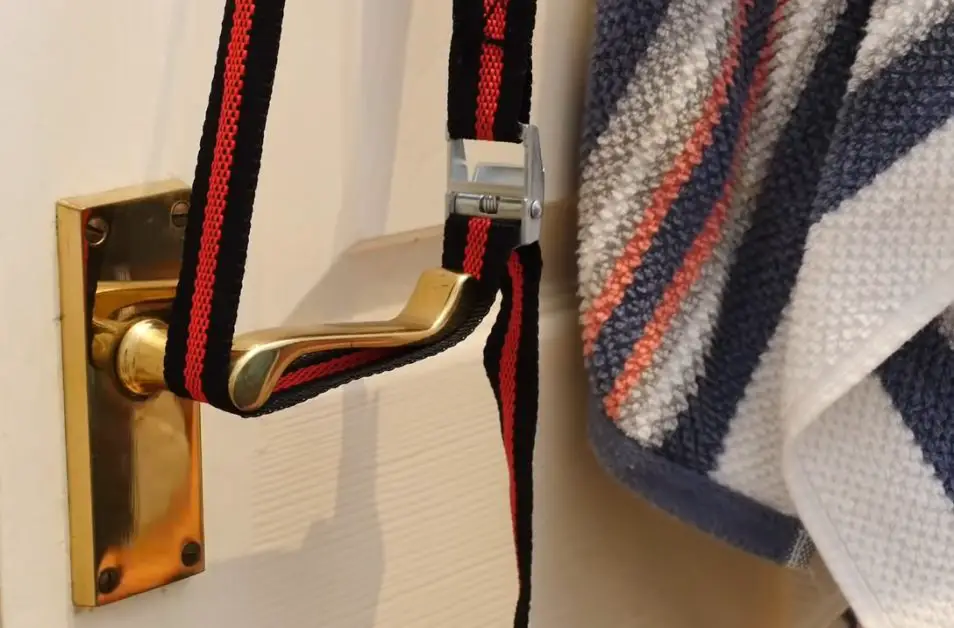
If your door opens outwards, best to attach a string or rope to the doorknob. The string or the rope should be tied to a stationary object. This method works if another person pulls the door. Tension is created in the string or rope and the object keeps the door shut. (2)
Bind the Door Handles Together
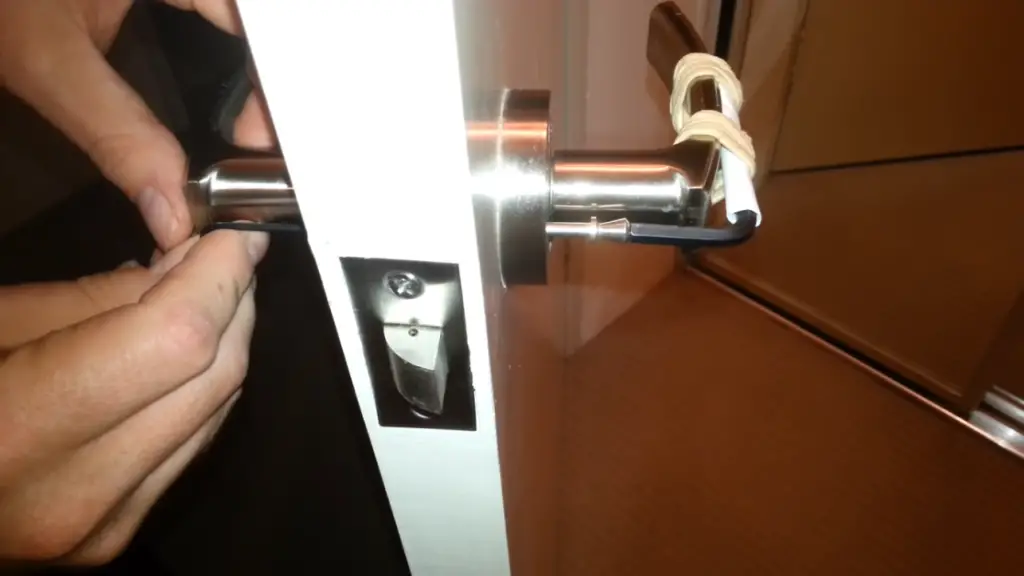
Use tools such as ropes and chains to bind your doorknobs or handles together. Again, this method will help you when you are in a hurry.
Use a Security Bar
The security bar will jam the door handle from the inside. To secure your door with a security bar, pup an end of the security bar under the doorknob/handle. Place the other end on the floor. You may also use a security bar to lock your sliding doors and windows. To do this, you need to place the security bars horizontally.
Security bars are very flexible. You can increase or decrease them according to the width of your doors and windows.
Dismantle your Door Handle(s)
Most doors have handles. These handles are simply twisted. The working mechanisms of the doors make it easy for thieves and burglars to access your house and steal properties.
Simply remove the door handle and close or open your door as you wish. This will create a difficult situation for the thieves.
Use a Chair
This may seem absurd but chairs are excellent obstacles. It is one of the fastest ways to barricade your door if it does not have a lock. Follow the below-mentioned steps to do it correctly.
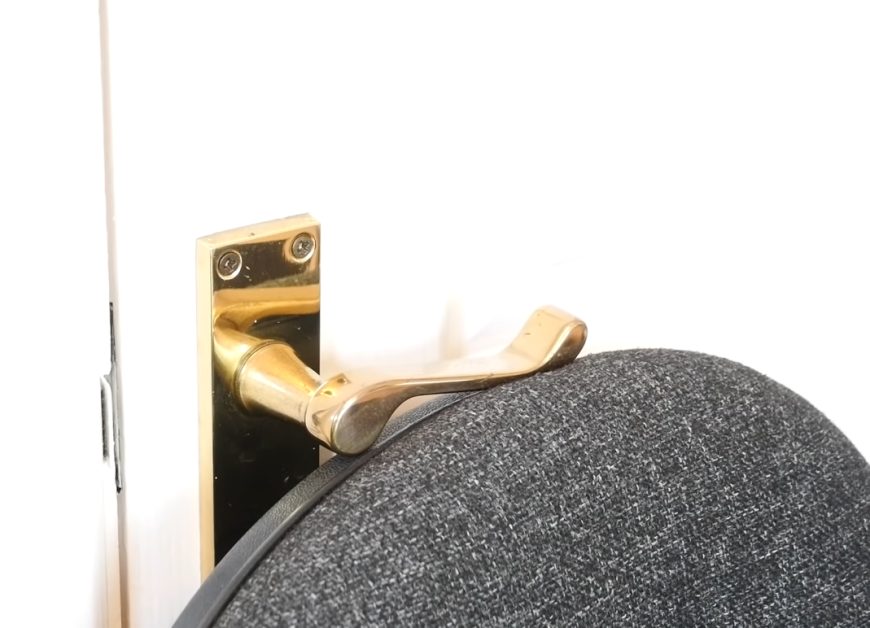
- Get a heavy or bulky chair. Do not fold or twist the chair.
- Now close the door. Then place the top part of the chair underneath the door handle or knob. Ensure the front ‘legs’ of the chair are not touching the floor but lifted at an angle.
- Now put your chair as close as possible to your door. The chair will apply pressure to the doorknob. Most doorknobs are stiff and that will keep your door locked properly.
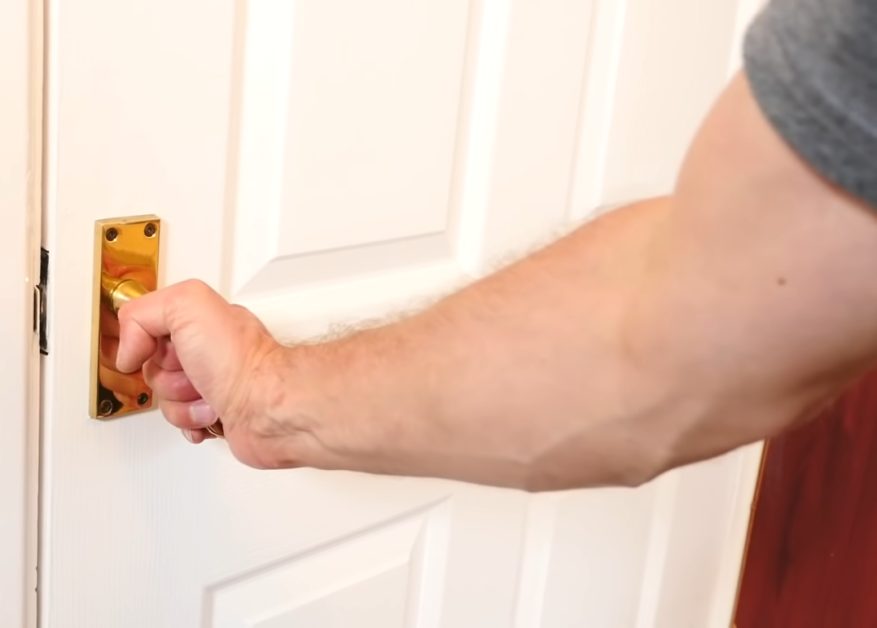
Use a Wedge to Lock your Door
This option is valid for doors that open inward only.

- Close the door completely and place the wedge on the top section and the opening sides of the door. These wedges can be objects that penetrate the bottom of the door and hold it firmly. Make sure they have a good grip to prevent them from sliding on against slight push/pressure. You can use a hammer or a jam.
- Then tightly set your wedge.
- Now test your door if it has properly locked. Do this multiple times.
Securing our homes is crucial. We should master as many techniques as possible to keep intruders at bay. If you find this guide helpful, please put us in the light.
Take a look at some of our related articles below.
References
(1) tensile strength – https://www.britannica.com/science/tensile-strength
(2) stationary object – https://spark.iop.org/stationary-objects
Video References
DaveHax
Evgeny Muryshkin

